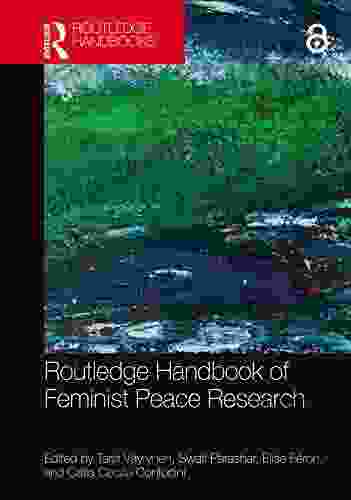Mastering Miranda Rights: A Comprehensive Guide to the Study Guide for United States Supreme Court Miranda Arizona Course Hero Study

The United States Supreme Court's landmark decision in Miranda v. Arizona (1966) revolutionized the way police officers interact with suspects during custodial interrogations. The Miranda Rights, as they are commonly known, are designed to protect individuals from self-incrimination and ensure that confessions are obtained fairly and voluntarily. Understanding these rights is crucial for both law enforcement and citizens alike. This article serves as a comprehensive study guide for the United States Supreme Court Miranda Arizona Course Hero Study, providing an in-depth analysis of the Miranda Rights, their history, and their application in real-world scenarios.
Prior to the Miranda decision, police interrogations were often conducted without any formal guidelines or safeguards. This led to widespread abuse and coercion, with suspects being subjected to長時間的 interrogations, psychological pressure, and even physical violence. Confessions obtained under such circumstances were often unreliable and coerced, raising serious concerns about the fairness and integrity of the criminal justice system.
In Miranda v. Arizona, the Supreme Court ruled that suspects must be informed of their rights before being subjected to custodial interrogation. These rights include the right to remain silent, the right to an attorney, and the right to have an attorney present during questioning. The Court held that these rights are essential to protect individuals from self-incrimination and to ensure that confessions are obtained fairly and voluntarily.
5 out of 5
| Language | : | English |
| File size | : | 1525 KB |
| Screen Reader | : | Supported |
| Print length | : | 227 pages |
| Lending | : | Enabled |
The Miranda Rights consist of five specific warnings that must be given to suspects before questioning:
- You have the right to remain silent.
- Anything you say can and will be used against you in a court of law.
- You have the right to an attorney, and if you cannot afford one, one will be appointed to you.
- You have the right to have an attorney present during questioning.
- If you waive any of these rights, you do so voluntarily and knowingly.
These warnings must be given in a clear and understandable manner, and the suspect must be given an opportunity to ask questions or consult with an attorney before waiving any of their rights.
While the Miranda Rights are generally required in custodial interrogations, there are a few exceptions to this rule. These exceptions include:
- Public safety exceptions: If the police have a reasonable belief that the suspect is an immediate threat to public safety, they may question the suspect without giving Miranda warnings.
- Emergency situations: If there is an emergency situation that requires immediate action, the police may question the suspect without giving Miranda warnings.
- Spontaneous statements: Statements made by a suspect that are not the result of police interrogation are not subject to the Miranda rule.
In practice, law enforcement officers must follow strict procedures to ensure that Miranda Rights are properly given and waived. This includes:
- Arresting the suspect and placing them in custody.
- Informing the suspect of their Miranda Rights.
- Giving the suspect an opportunity to ask questions or consult with an attorney.
- Obtaining a voluntary and knowing waiver of the suspect's rights before questioning.
- Documenting the entire process, including the warnings given, the suspect's responses, and any waivers of rights.
If Miranda Rights are not properly given or waived, any statements obtained during the interrogation may be suppressed from evidence at trial. This means that the prosecution will not be able to use those statements against the defendant. In some cases, Miranda violations may also lead to charges of police misconduct or civil rights violations.
To ensure Miranda compliance, law enforcement officers should follow these best practices:
- Know the Miranda Rights and when they apply.
- Give the Miranda warnings clearly and understandably.
- Give the suspect an opportunity to ask questions or consult with an attorney.
- Obtain a clear and voluntary waiver of the suspect's rights before questioning.
- Document the entire process thoroughly.
- Regularly review and update Miranda training procedures.
The Miranda Rights are an essential safeguard for the rights of suspects during custodial interrogations. By understanding the history, application, and exceptions to the Miranda rule, law enforcement officers can ensure that they are conducting interrogations fairly and ethically. Citizens should also be aware of their Miranda Rights and assert them if they are ever placed in a custodial interrogation situation. By working together, law enforcement and citizens can protect the integrity of the criminal justice system and ensure that everyone's rights are respected.
- Miranda v. Arizona, 384 U.S. 436 (1966)
- U.S. Department of Justice, Miranda Rights
- National Council on Crime and Delinquency, Miranda Rights
- Legal Information Institute, Cornell Law School, Miranda Rights
Image Alt Attributes:
- Miranda Arizona Supreme Court: The Supreme Court building in Washington, D.C.
- Rights: A judge's gavel with the words "Miranda Rights" written on it.
- Custodial Interrogation: An image of a police officer questioning a suspect in a room.
- Police Coercion: An image of a police officer using physical force to restrain a suspect.
- Safeguarding Suspect Rights: An image of a lawyer standing next to a suspect during questioning.
- Miranda Warnings: An image of a person being read their Miranda Rights.
- Law Enforcement Best Practices: An image of police officers receiving Miranda Rights training.
- Criminal Justice Integrity: An image of a courtroom with the scales of justice in the foreground.
5 out of 5
| Language | : | English |
| File size | : | 1525 KB |
| Screen Reader | : | Supported |
| Print length | : | 227 pages |
| Lending | : | Enabled |
Do you want to contribute by writing guest posts on this blog?
Please contact us and send us a resume of previous articles that you have written.
 Novel
Novel Page
Page Chapter
Chapter Text
Text Story
Story Genre
Genre Paperback
Paperback Newspaper
Newspaper Paragraph
Paragraph Bookmark
Bookmark Shelf
Shelf Glossary
Glossary Foreword
Foreword Preface
Preface Synopsis
Synopsis Footnote
Footnote Codex
Codex Bestseller
Bestseller Classics
Classics Narrative
Narrative Biography
Biography Autobiography
Autobiography Reference
Reference Dictionary
Dictionary Thesaurus
Thesaurus Character
Character Resolution
Resolution Borrowing
Borrowing Study
Study Research
Research Scholarly
Scholarly Academic
Academic Journals
Journals Rare Books
Rare Books Special Collections
Special Collections Literacy
Literacy Study Group
Study Group Awards
Awards Book Club
Book Club Theory
Theory Amanda Laoupi
Amanda Laoupi Baby Darling
Baby Darling Juan P Carmona
Juan P Carmona Marques Vickers
Marques Vickers Mike Danneman
Mike Danneman Brian Groom
Brian Groom Michael J Bruton
Michael J Bruton Courtney Walsh
Courtney Walsh Grace Maccarone
Grace Maccarone Elizabeth Hartman
Elizabeth Hartman Brett Anderson
Brett Anderson Arne Nerjordet
Arne Nerjordet Polly Jones
Polly Jones Mark Jasper
Mark Jasper Fannie Flagg
Fannie Flagg Kathryn Freeman
Kathryn Freeman Nicholas Humphrey
Nicholas Humphrey Alan Duff
Alan Duff Leon Rubin
Leon Rubin Venus E Evans Winters
Venus E Evans Winters
Light bulbAdvertise smarter! Our strategic ad space ensures maximum exposure. Reserve your spot today!

 Brennan BlairHow to Mount Your 1942-1947 Ford Half Ton Truck Sheet Metal on an Aftermarket...
Brennan BlairHow to Mount Your 1942-1947 Ford Half Ton Truck Sheet Metal on an Aftermarket... Dean CoxFollow ·12.6k
Dean CoxFollow ·12.6k Vic ParkerFollow ·6k
Vic ParkerFollow ·6k Edwin CoxFollow ·12.6k
Edwin CoxFollow ·12.6k Donald WardFollow ·11.6k
Donald WardFollow ·11.6k Dashawn HayesFollow ·12.9k
Dashawn HayesFollow ·12.9k Ruben CoxFollow ·4.3k
Ruben CoxFollow ·4.3k James JoyceFollow ·18k
James JoyceFollow ·18k Martin CoxFollow ·7.8k
Martin CoxFollow ·7.8k

 Hayden Mitchell
Hayden MitchellThe Routledge Handbook of Feminist Peace Research: A...
The Routledge...

 Joe Simmons
Joe SimmonsUnveiling the Lyrical Mastery of Henri Cole's "Blizzard...
In the realm of...

 E.E. Cummings
E.E. CummingsEast End Hardman To Tv Star: The Unlikely Rise Of Danny...
Danny Dyer is one of the...

 Eli Brooks
Eli BrooksMusic in the Tradition of Thich Nhat Hanh: A Journey of...
In the heart of...

 Samuel Ward
Samuel WardAmazing Scenes in Plastic Canvas: Bringing Your...
Plastic canvas is a...

 E.E. Cummings
E.E. CummingsA Comprehensive Guide to Non-Jazz Improvisation for...
: Embracing the Art of...
5 out of 5
| Language | : | English |
| File size | : | 1525 KB |
| Screen Reader | : | Supported |
| Print length | : | 227 pages |
| Lending | : | Enabled |










